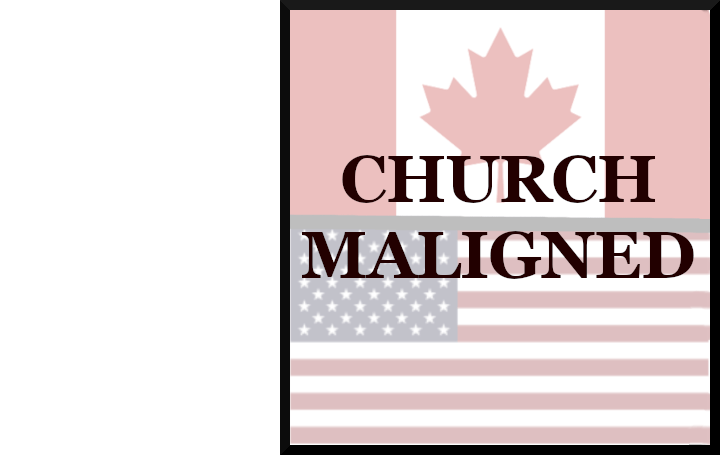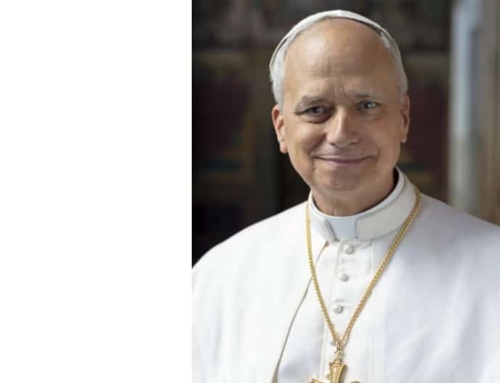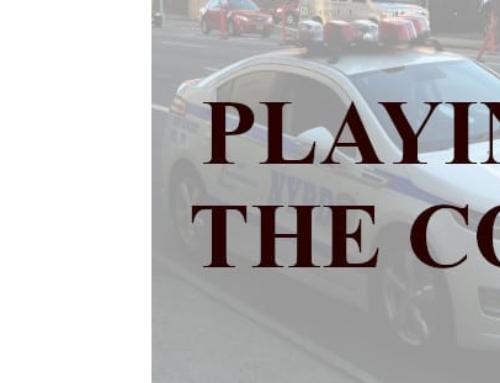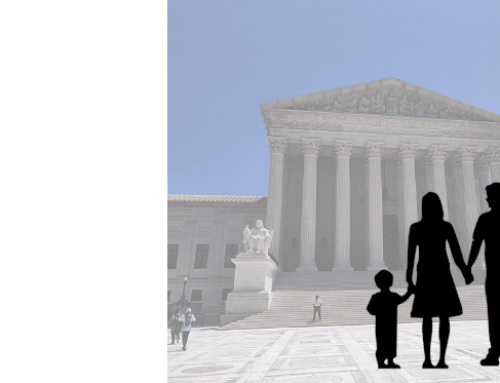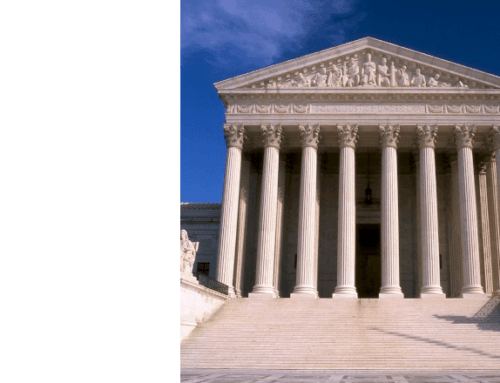In the 1980s, Jeane Kirkpatrick, foreign policy advisor to President Ronald Reagan and the U.S. Ambassador to the United Nations, was fond of saying that the critics of the United States always blame the U.S. for whatever was going wrong in the world. Similarly, I can say that in the over three decades of doing this job, I continue to be impressed by the number of critics of the Catholic Church who always blame the Church for whatever is going wrong in the world.
There is much more than gullibility going on here. To be gullible is to be easily persuaded. The most consistent and severe critics of the U.S. and the Catholic Church are not naïve: they are hateful and vindictive. They are willing to believe the worst because, from the get-go, they have been seriously ill-disposed to these two titans.
Regarding Catholicism, the latest proof that critics of the Church have gone off the rails took place in Canada. Accusations that the Church’s handling of indigenous peoples in Canada made big news in 2015. It was accused of “cultural genocide,” if not wholesale genocide. Suffice it to say that a number of scholars, including myself, mounted a strong challenge to this rendition.
Then in 2021, the Church was accused of creating “mass graves” for indigenous children in the residential schools. That was debunked in 2022. But in 2023, new accusations of “mass graves” surfaced. More recently, that, too, has been debunked. As it turned out, both stories turned out to be a hoax. However, like vicious rumors that turn out to be false, it is hard to erase the initial perception that wrongdoing was committed.
The Report
In 2008, the Truth and Reconciliation Commission of Canada was established. It was mandated to report on the history and the ongoing legacy of the Canadian government’s residential schools for indigenous peoples, many of which were run by Catholic and Protestant churches. In 2015, its findings were published. Titled “Honouring the Truth, Reconciling for the Future,” it will be referred to as the Report.
The Report found that 150,000 indigenous children were taken from their homes and forced to attend schools that would assimilate them into the dominant culture. It was the Canadian government that made this decision.
The most serious charges that initially surfaced said that the residential school system was guilty of “cultural genocide.” In due course, commentators shortened this to “genocide.”
As I pointed out in my 2022 analysis of the Report, neither genocide nor cultural genocide occurred. It’s all a cruel myth.
The Report cites not a single person who was killed in the residential schools. There are two testimonials of killings in the Report, and one was made by an indigenous woman who said she witnessed her older brother kill one of her other brothers when she was nine. The other cites a 2014 document that claims that “1,017 Aboriginal women and girls were killed and 164 were missing.” But these killings took place between 1980 and 2012. The residential schools were closed in 1969.
There were no instances of torture listed in the Report. The one instance of whipping was committed by a government teacher in 1895. Corporal punishment did exist—disobedient boys had their hair cut off—but this was common throughout the world at this time in both secular and religious schools. No doubt there were cases of abuse, but it trivializes what has happened to true victims of genocide to pin this label on conditions in the residential schools.
The Report claims that “cultural genocide” was committed against the indigenous population. Yet on p. 6 it offers evidence that contradicts this claim. “Although Aboriginal peoples and cultures have been badly damaged,” it says, “they continue to exist.” By definition, cultures that continue to exist have not been wiped out.
This is not to say that ethnocentrism didn’t exist. Of course it did. The lifestyle of the indigenous population was clearly perceived to be culturally inferior to Europeans. Missionaries being missionaries, they were obviously convinced that converting these peoples was in their best interest. Looking back at this from today’s perspective, there is room for criticism. But to judge the past by contemporary standards is not a mature way of understanding history. To indict everyone is to indict no one.
The Report cites several instances that demonstrate the noble intent of the Catholic-run schools. Catholic officials insisted that they were better able to deal with Aboriginal students than those who ran the public schools. Their Christian training afforded them a better understanding of how to deal with these students. They also criticized the public schools for their racist attitudes. Given their impoverished condition, these students were also more likely to feel inferior to public school students than they would in a Catholic-run school.
There were other advantages to these children being served by Catholics, as opposed to Protestant and government-run schools. “The Roman Catholic schools could draw staff from a number of Catholic religious orders,” the Report notes, “whose members had made explicit vows of obedience, poverty, and chastity. In the spirit of those vows, they would be obliged to go where they were sent, would not expect payment, and would have no families to support.”
The Report even says that “Former staff and the children of former staff members have expressed the view that much of the discussion of the history of residential schools has overlooked both the positive intent with which many staff members approached their work, and the positive accomplishments of the school system.” Indeed, many of these Catholic staff members continued “teaching, cooking, cleaning, farming, and supervising children” long after they completed their assignment (which lasted a year or two).
The Report is replete with criticism about the “Doctrine of Discovery” that provided legal justification for granting rights to land discovered by European colonizers. What it doesn’t say is that idea was never a doctrine or a part of the teaching of the Catholic Church. It also doesn’t say that the so-called “Doctrine of Discovery” was officially repudiated by the Catholic Church in 1537.
“The Mass Grave Hoaxes”
The Report said nothing about “mass graves” being erected on Catholic property. That accusation surfaced in May 2021.
Who was responsible for spreading the hoax? Scholars, Indian activists and the American media.
In May 2021, a young anthropologist, Sarah Beaulieu, after assessing the land near a former Catholic residential school with radar, hypothesized that there was a “mass grave” there. This position was shared by Chief Rosanne Casimir, who maintained that “ground-penetrating radar” discovered the remains of 215 children in a mass grave on the grounds of the school in British Columbia.
As Canada’s National Post reported in September 2023, “One of the first mentions of the term ‘mass grave’ came from the New York Times.” In fact, this is where Chief Casimir’s claim was made public; it appeared in the May 28, 2021 edition of the paper.
The Associated Press (AP) issued a similar story the next day, claiming up to 6,000 indigenous peoples died during the residential school years. No source was given. This was strange given that in the same news story, it said the Report put the number who died at 3,200. More important, AP did not say why there were so many deaths. But as the National Post reported, they were “mostly due to disease.” And as the Report documents, it was tuberculosis that claimed the lives of more children than any other disease.
Authoritative articles debunking the “mass grave” thesis began appearing in January 2022. Jacques Rouillard, professor emeritus in the Department of History at the University of Montreal, questioned, “After seven months of recrimination and denunciation, where are the remains of the children buried at the Kamloops Indian Residential School?”
“In the wake of unsubstantiated claims by Aboriginal Indians,” he wrote, “several media outlets amplified and hyped the story by alleging that the bodies of 215 children had been found, adding ‘thousands’ of children had ‘gone missing’ from residential schools and that parents had not been informed (his italic).”
John Daniel Davison, senior editor at The Federalist, wrote that “In the seven months since this shocking news broke, not one body has been found, and not a single shovel-full of dirt has been excavated from the site in question.”
Tom Flanagan and Brian Giesbrecht in the Dorchester Review slammed the initial reports for the “lies” that were told. They also wrote that much of the criticism reflects the “anti-Christian sentiment [that] has been largely directed at the Catholic Church and the Catholic religious orders which operated and staffed many residential schools,” despite the fact that “Catholic-run institutions comprised only 43% of all Indian residential schools in Canada.”
While the hoax was exposed, the damage done to the Catholic Church’s reputation was severe. It also led to violence.
In retaliation to the bogus story, 68 Catholic churches were desecrated, damaged or destroyed. This includes ten churches that suffered significant damage from arson. Some, like St. Ann’s on the Chuchuwayha reserve in British Columbia, were set on fire and burned to the ground. The worst of the violence took place between June 21 and July 9, 2021.
A second round of accusations emerged in the summer of 2023 when excavations of the “mass grave” began. In August, the National Post reported that “No evidence of human remains has been found during the excavation of a Catholic church basement on the site of a former Manitoba residential school.” Again, the body count was zero.
Neither the New York Times nor AP has run a news story about the two hoaxes. One of the sources cited by the Times, Chief Casimir, was briefly mentioned in January 2023, but this was before the second hoax was exposed. In essence, both media outlets have shamelessly allowed their false stories to go unchecked.
In fairness, there were some Indian activists, such as First Nation Chief Cadmus Delorme, who were cautious about making wild generalizations from the beginning. He said that the “mass graves” were actually plots within a larger Catholic cemetery whose headstones had been removed by Catholic authorities. “This is not a mass grave site. These are unmarked graves.” Too bad the American media weren’t as honest.
Conclusion
Smearing the Catholic Church is commonplace, especially among elites in Western nations. What is particularly galling is the rank hypocrisy of the ruling class.
In 2017, in the wake of Canadian Prime Minister Justin Trudeau’s appeal to Pope Francis to apologize for the mistreatment of indigenous peoples, I wrote him a letter, which I made public, that requested an apology from him for “the Canadian government’s oppression of Indians, Africans, Asians, Jews, Protestants, and Catholics.” The victimization of Catholics continues to this day in Canada, making my plea all the more urgent.
In 2022, I accused Trudeau of “cultural genocide” by shoving his radical LGBTQ agenda down the throat of Third World nations. There are many such examples.
If the truth were told, the world would come to realize the great good that Catholic missionaries have done. They would also conclude that the Church’s biggest critics don’t have a moral leg to stand on.


